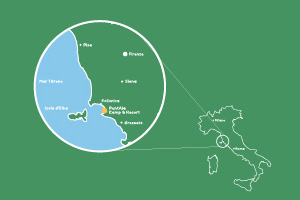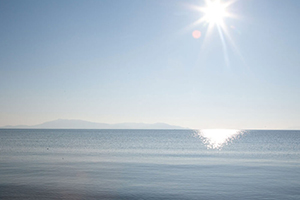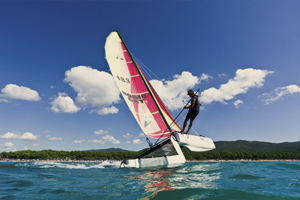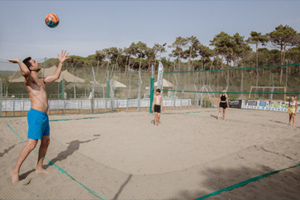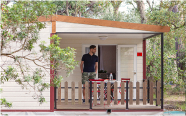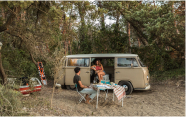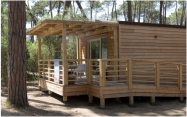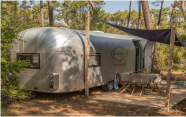Sovana: what to see, where to sleep and how to get there
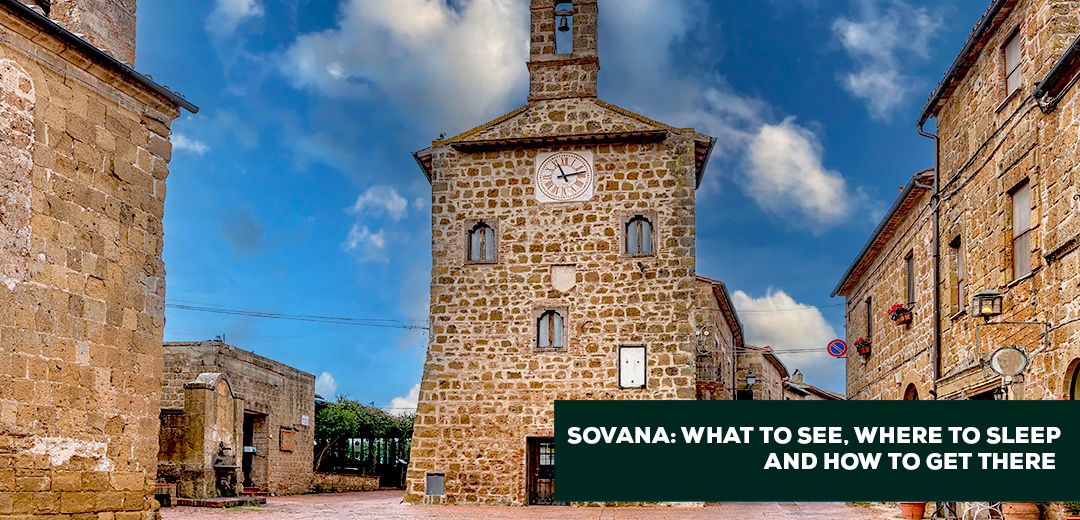
Sovana is a charming little village nestled in the Tuscan countryside, where life goes on at a leisurely pace: a hidden gem of Tuscany. Located off the beaten tourist track, this tiny village is home to less than 500 inhabitants, yet shines like a precious gem in the heart of the Grosseto Maremma. Although remote, Sovana is close to famous Tuscan destinations such as Pitigliano and the thermal baths of Saturnia.
Sovana sees its roots in Etruscan times, beginning to prosper from the Middle Ages and expanding during the Renaissance. After a period of lesser splendour, Sovana began its renaissance in the 20th century, thanks to its considerable tourist appeal and spectacular scenic beauty. In Sovana, one has the opportunity to discover the ancient Etruscan necropolis. but also for its architectural works, such as the Rocca Aldobrandesca, a now decayed castle that reawakens the tormented chronicle of the place, the Palazzo Bourbon del Monte, a 16th-century building adorned with a fascinating portico, and the oldest place of worship, the Church of San Mamiliano.
Other components that add to Sovana's charm are the Palazzo dell'Archivio, famous for its distinctive design and bell tower, the Palazzo Pretorio from the medieval period and the Church of Santa Maria Maggiore, with its Romanesque and Gothic traces, which intensify the aesthetic and historical value of the town. Despite centuries of decadence, Sovana's revival has led to its identification as one of Italy's most attractive villages, turning the place into an emblem of beauty.
Sovana
Sovana is an enchanting Maremma village, perched in the middle of the Tuscan countryside, where life goes on peacefully; a hidden jewel of Tuscany. Sovana is a tiny hamlet in the municipality of Sorano, with less than 500 inhabitants, but it is a sparkling gem set in the heart of the Maremma region of Grosseto. It is located in a relatively remote position, off the crowded tourist routes, yet it is very close to some of Tuscany's most famous destinations, such as Pitigliano or the thermal baths of Saturnia. Sovana will be a fascinating chapter of your trip: you will discover a tiny village, built on tuff, that was born during the Etruscan era, grew in the Middle Ages and expanded during the Renaissance. After centuries of decay and desolation, Sovana was revalued in the 20th century thanks to its high tourist potential and surrounding beauty, which quickly led it to join the association of the most beautiful villages in Italy. In Sovana you will have the opportunity to visit the historic village, which, despite its small size, has a number of very interesting attractions, and then you can dedicate yourself to exploring the wonderful
surroundings.
What to see in Sovana
Despite its small size, the options of things to see in Sovana are many. During your stay, you should not miss any of them.
Etruscan Necropolis of Sovana
Located along the route that connects the hamlet of Sovana to San Martino sul Fiora, the Necropolis (surveyed in 1843 by Ainsley) has always been visited by tourists because of the value of its archaeological excavations. In addition to these, numerous scholars have also left fascinating descriptions of both the Necropolis and the lush surrounding landscape. One of these descriptions, that of George Dennis in 1848, gave Sovana and its findings international prestige. From then on, numerous excavations were begun, although not always for scientific purposes, and it is only from 1925 onwards that we can speak of an actual activity of study and complete recording of the architectural parts of the tombs that had been discovered previously (among these, the Ildebranda Tomb thanks to the Rosi brothers). The Sovana necropolis is not the largest compared to the necropolis in neighbouring areas, but it is certainly a unique example for the variety of tombs that can be discovered there and that display all the beauty of Etruscan architecture and art.
Paola Tomb
This tomb most probably dates back to the 3rd century BC. Of the original eight columns, only one remains today. In the centre of these columns was the entrance to the burial chamber. Here too, the façade must have been completely covered in coloured stucco in accordance with typical Etruscan aesthetics. Inside the 'pronaos' one can observe very simple flat-panelled coffers.
Tomb of the Typhon
Dating back to the 2nd century B.C., this is a typical example of a tympanum tomb with a portico. The name is due to a decorative sculpture found inside depicting the head of a mythological monster from ancient Greece: Typhon. As with the Ildebranda Tomb, the influence of the Hellenic civilisation on the Etruscan civilisation is very marked.
Tomb of Silenus
The Tomb of Silenus is dated around the 3rd century BC and takes its name from the discovery, during excavations, of a head of Silenus. An aedicula-type tomb, it denotes some differences from the Hellenic style, for example in the style of the four columns more akin to Ionic than Doric. The legend of the Silenes, who are represented with features between human and feral, also dates back to Greek mythology.
Pisa Tomb
A splendid example of a 'chamber' tomb, it dates back to around the 3rd century B.C. and is entirely excavated in a block of tufa rock. It can be assumed that it was used for several generations, as it consists of 9 interconnected chambers and is very spacious. In addition, remains have been found dating from various periods, from the 3rd to the 1st century BC, consisting mainly of Hellenistic ceramics with metallic details in gilded bronze. The name derives from the fact that it was discovered in 1963 by the Pisa Institute of Archaeology.
Tomb of the Siren Here too, we are faced with an example of an aedicule tomb dating back to the 3rd-2nd century B.C. and consisting of a front part in which there is a niche on which the beautiful pediment adorned with sculptures can be seen. Of these sculptures, the most notable is certainly that of Scylla, a half-woman, half-fish figure mentioned by Homer, and next to it two other figures that presumably must have represented the deceased's tutelary genii. In the niche below the pediment, the deceased can be found depicted during a banquet. This peculiarity can be found in many Etruscan sarcophagi and urns. This figure today is almost completely smoothed out and not too visible, Perhaps the tomb was used as a shrine, as one might think given the presence of a carved cross on the bed. The burial chamber is located in front of the façade below, and is accessed through a narrow 'dromos'. Both are positioned obliquely to the façade, due to the particular slope. The burial chamber is not extensive; three benches can be seen inside, presumably used to house urns containing the ashes of the deceased.
Rocca Aldobrandesca
The Rocca Aldobrandesca is a ruined castle located outside the historical centre on the eastern side of Sovana. It is a very evocative place, bearing witness to the village's disputed past between the Sienese and Florentines. Little remains of the ancient castle other than large tufa ruins, which are, however, fairly well preserved, along with the remains of the walls resting on Sovana's primitive walls; this feature supports the hypothesis that the fortress was built on a pre-existing structure from Etruscan times. The Rocca Aldobrandesca of Sovana was restored several times over time: first in the 15th century when Sovana was conquered by the Republic of Siena, and later in the 16th century when it became part of the Grand Duchy of Tuscany. From then on, however, the structure was abandoned, and ended up in a state of decay.
Bourbon del Monte Palace
The Palazzo Bourbon del Monte is located in the main square of Sovana, between the churches of San Mamiliano and Santa Maria Maggiore. It is a 16th-century building embellished with a beautiful arched portico, beyond which is the main building, originally the home of a bishop of the Bourbon family, later converted into a public office and municipal school. Only a few years ago, the building was restored following a collapse in the 1960s. During the month of August, since 2009, the garden and the large hall of the Bourbon del Monte palace have been the stage for an important theatre review called 'Sovana in arte'.
Church of San Mamiliano
The Church of San Mamiliano is located in the historical centre and is the oldest building of worship in the town. Its origins date back to the 6th century and it was built in the Romanesque style, even though, according to scholars, it was dedicated to another saint. The church is located on the left side of Piazza del Pretorio, and has recently been restored; extensive work has brought to light works of art, tombs and a treasure of 500 gold coins. Inside, the structure has a single nave and an unusual double apse, in which there was almost certainly a crypt in the past. The church of San Mamiliano, like the more famous abbey of San Galgano, is also roofless, although it does not offer the same scenic effect, and the tufa walls remain standing.
Pretorio Palace
The Palazzo Pretorio of Sovana, located in Piazza del Pretorio, is an ancient medieval palace. Today it houses the visitor centre of the Tufo archaeological park and the Sovana territory documentation centre. On its façade, as a decorative but above all historical element, are the coats of arms of the ancient families that have ruled Sovana over the centuries. The façade on the left is adjoined by the Loggia del Capitano, a small medieval loggia covered in tufa blocks.
Co-cathedral of Saints Peter and Paul
The cathedral of Sovana has very ancient origins and its foundation seems to date back to the 8th century. During this time it has been modified several times and today presents itself in its austere Romanesque-Gothic style. During the numerous alterations, various decorative elements were added, such as the sculptures on the rich portal and the beautiful six-columned crypt. The Cathedral is located on the eastern side of the town.
Municipal Palace of Sovana
The town hall, also known as the Palazzo dell'Archivio, is located in the centre of Sovana and is certainly the most photographed building in the town because it has a distinctive shape. Its façade is dominated by the three-storey bell tower, although its dimensions are not excessive. Its origins date back to the 12th century, but this building was also remodelled in the following centuries, starting as early as 1433 when it suffered heavy damage caused by the siege of the troops of the County of Pitigliano. The following centuries also saw several alterations to the building that led to the addition of elements that we can still see today, such as the clock that was made in 1588. Between the 19th and 20th centuries, the town hall fell into a phase of decay and abandonment, but a recent restoration has brought it back to its former glory.
Church of Santa Maria Maggiore
Also situated in Piazza del Pretorio, the Church of Santa Maria Maggiore is located adjacent to the Bourbon del Monte palace. Divided into three naves, it dates back to the 12th century, but like many buildings in the city, it was substantially modified in the 16th century. In fact, today one can admire both Romanesque and Gothic elements. The frescoes in the right nave are of considerable value, further enriched by the presence of a magnificent stone ciborium, located in the apse and among the few examples of pre-Romanesque art in Tuscany.
Where to stay in Sovana
The small village of Sovana offers several types of accommodation to choose from, both hotels and flats. Sleeping in the village will allow you to enjoy moments of extraordinary quiet, especially early in the morning or late at night, when the village empties of tourists on a day trip back to their hotels on the coast or in the more emblazoned resorts of the Maremma. If you prefer to stay amidst the scents and atmospheres of the surrounding countryside, you can stay in one of the agritourisms, country houses, farms or farmhouses, elegantly restored and brought back to life, furnished in the typical rustic Tuscan style, but equipped with all the comforts such as a swimming pool and restaurant, to enjoy your holiday in Tuscany to the full.
Map of Sovana
How to get to Sovana
Situated in a rather isolated position, Sovana is located at the south-eastern tip of Tuscany a short distance from the border with Lazio. This makes the journey to get there a bit long, but the charm of this small village makes the trip definitely worth it.
If you arrive from Florence, the car journey takes about two and a half hours. You will have to take the A1 motorway at the Firenze Sud exit and continue in the direction of Rome until Chiusi-Chianciano Terme. From Chianciano Terme, follow the provincial road SP478 to San Casciano dei Bagni, then continue on the SP321 and finally on the SP20 to Sovana. The journey covers a distance of almost 200 kilometres.
For those arriving from Pisa or Livorno, the journey is even longer. It takes about three hours to cover a total distance of about 240 kilometres. You have to proceed in a southerly direction along the SS1 Aurelia through the entire Tuscan coast to Grosseto, then pass it and continue to Albinia. From Albinia, you will have to take the SP74 that will take you directly to Sovana. Even from Grosseto, the provincial capital, the journey to Sovana takes time. It takes about one hour and fifteen minutes to cover a distance of 80 kilometres. Again, to get to Sovana you must first reach Albinia and then continue on the SR74.
If you are travelling from inland Tuscan cities such as Siena and Arezzo, it takes about two hours to get to Sovana. You have to take the SR2 Via Cassia from Siena, or the A1 motorway to Chiusi-Chianciano Terme and the SP478 from Arezzo. These roads rejoin at Valsacco, from where you can reach Sovana via the provincial roads SP20 and SP22.
Public transport services in the area are few, except for a few extra-urban buses connecting the various hamlets and villages in the surroundings.
Therefore, if you want to visit Sovana, the most sensible choice might be to rent a car. In any case, despite the distance, visiting Sovana is a unique experience worthwhile. This ancient village offers an authentic taste of historic Tuscany, far off the beaten tourist track.
Where Sovana is located
Located in Tuscany, in the territory of Grosseto, Sovana is a charming town in the Maremma. This enchanting village is part of the municipality of Sorano, is only a few kilometres from Pitigliano and is close to the border with Lazio.












